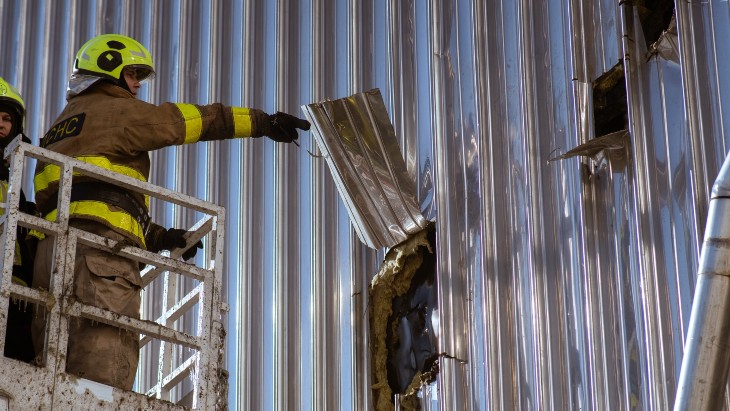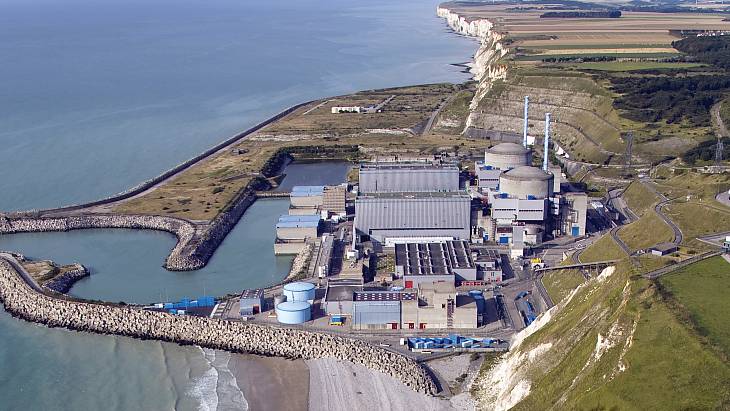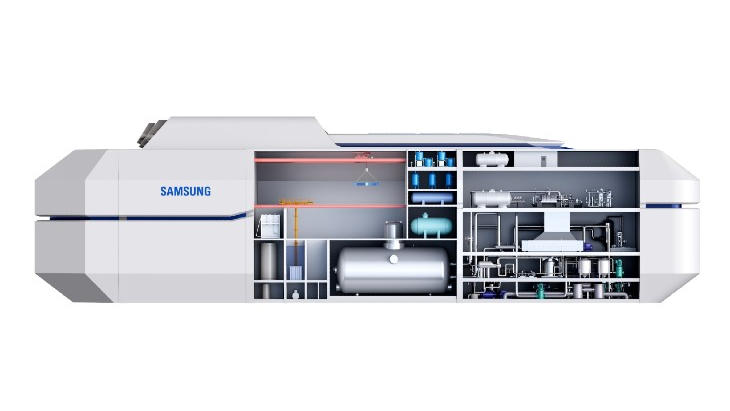The agency said that investigations continue to determine the extent of the damage sustained by the arch-shaped New Safe Confinement (NSC) shelter following the drone strike on 14 February.
The impact caused a 15-square-metre hole in the external cladding of the arch, with further damage to a wider area of about 200-square-metres, as well as to some joints and bolts. It took about three weeks to fully extinguish smouldering fires in the insulation layers of the shelter.
In its update on the situation, the International Atomic Energy Agency (IAEA) said: "It took several weeks to completely extinguish the fires caused by the strike. The emergency work resulted in approximately 330 openings in the outer cladding of the NSC arch, each with an average size of 30-50 cm.
"According to information provided to the IAEA team at the site, a preliminary assessment of the physical integrity of the large arch-shaped building identified extensive damage, for example to the stainless-steel panels of the outer cladding, insulation materials as well as to a large part of the membrane - located between the layers of insulation materials - that keep out water, moisture and air."
The main crane system, including the maintenance garage area, was damaged and it is not currently operational, the IAEA said. The heating, ventilation and air conditioning systems are functional but have not been in service since the strike. Radiation and other monitoring systems remain functional, the IAEA said. There has been no increase in radiation levels at any time during or since the drone strike.
IAEA Director General Rafael Mariano Grossi said: "We are gradually getting a more complete picture of the severe damage caused by the drone strike. It will take both considerable time and money to repair all of it."
The shelter
Chernobyl unit 4 was destroyed in the April 1986 accident (you can read more about it in the World Nuclear Association's Chernobyl Accident information paper) with a shelter constructed in a matter of months to encase the damaged unit, which allowed the other units at the plant to continue operating. It still contains the molten core of the reactor and an estimated 200 tonnes of highly radioactive material.
However it was not designed for the very long-term, and so the New Safe Confinement - the largest moveable land-based structure ever built - was constructed to cover a much larger area including the original shelter. The New Safe Confinement has a span of 257 metres, a length of 162 metres, a height of 108 metres and a total weight of 36,000 tonnes and was designed for a lifetime of about 100 years. It was built nearby in two halves which were moved on specially constructed rail tracks to the current position, where it was completed in 2019.
It has two layers of internal and external cladding around the main steel structure - about 12 metres apart - with both breached in the drone incident. The NSC was designed to allow for the eventual dismantling of the ageing makeshift shelter from 1986 and the management of radioactive waste. It is also designed to withstand temperatures ranging from -43°C to +45°C, a class-three tornado, and an earthquake with a magnitude of 6 on the Richter scale.
According to World Nuclear Association, the hermetically-sealed New Safe Confinement allows "engineers to remotely dismantle the 1986 structure that has shielded the remains of the reactor from the weather since the weeks after the accident. It will enable the eventual removal of the fuel-containing materials in the bottom of the reactor building and accommodate their characterisation, compaction, and packing for disposal. This task represents the most important step in eliminating nuclear hazard at the site - and the real start of dismantling".
The New Safe Confinement was financed via the Chernobyl Shelter Fund which was run by the European Bank for Reconstruction and Development (EBRD). It received EUR1.6 billion (USD1.7 billion) from 45 donor countries and the EBRD provided EUR480 million of its own resources.
On 4 March the EBRD allocated EUR400,000 from the administrative budget of the continuing fund for specialist-led damage assessment.
Elsewhere in Ukraine
The IAEA reported that the Zaporizhzhia nuclear power plant had lost one of its two remaining external power lines on Wednesday, which it said Ukraine's Ministry of Energy had told them was the result of military activity. Pre-war, the plant had ten external power lines.
Grossi said: "A secure supply of off-site power from the grid for all nuclear sites is one of the seven indispensable pillars of nuclear safety and security that we outlined early in the war. It is obvious that this supply is far from being secure. The vulnerability of the grid remains a deep source of concern for nuclear safety."
The plant has been under Russian military control since March 2022. It is located on the frontline of Russian and Ukrainian forces and has lost access to off-site power on eight occasions during the war, having to rely on emergency diesel generators to provide the power needed for safety functions.
Grossi said that he was in touch with both sides in the conflict as he seeks to organise the next rotation of the IAEA experts stationed at the plant. Reported differences over the route to be taken - via Ukraine or from the Russian side - and the safety situation has led to the current team now being at the plant for more than two months.
The IAEA teams based at Ukraine's three operating nuclear power plants and at Chernobyl "have continued to report about air raid alarms on most days over the past week", the agency added.





_47120.jpg)

_23621.jpg)






